What if Dreamcast Had Won?
15 years ago, Sega launched its final console, the short-lived Dreamcast. But what if it had survived?
This article first appeared on USgamer, a partner publication of VG247. Some content, such as this article, has been migrated to VG247 for posterity after USgamer's closure - but it has not been edited or further vetted by the VG247 team.
My favorite articles on the The Verge are the ones about "weird Sony"; they make a fascinating counterpoint to current Sony.
Over the past decade, Sony has seemingly lost its way, struggling from one failed project to another. Ten years ago, the PlayStation 4's bright success would have been simply a single hit in a vast portfolio; today, it's the company's sole bragging point.
"Weird Sony" describes the company's mindset at the height of its power. The days when you could walk into a Sony store like the one that used to reside in San Francisco's Metreon shopping center and be awed by the cutting-edge design of the company's innovative electronics even as their insane prices took your breath away. Did the world need Aibo, the interactive robotic dog? No, but it was as cool a gimmick as it was expensive, and helped project the image of Sony as a leader at the forefront of consumer electronics design. Owning a Sony product felt like taking possession of a shiny fragment of the future.
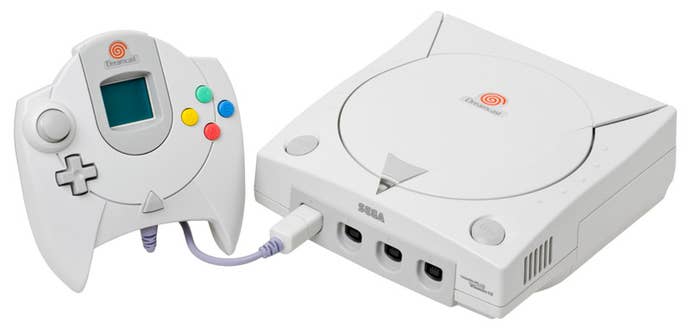
It may be difficult to reconcile today's ragged Sony with the behemoth it was in its halcyon days, but that impressive reputation had a powerful bearing on the outcome of an event that transpired 15 years ago today. On September 9, 1999, Sega launched the Dreamcast console in America. Dreamcast was an instant hit in the U.S. — yet just as quickly found itself discontinued by a meek and defeated Sega.
For all of Dreamcast's excellence, it simply couldn't stand for long in the face of Sony at its weird but elegant prime. The console's demise came at the hands of Sony's PlayStation 2. A more powerful piece of hardware, yes, but not so much more powerful that it made the Dreamcast instantly obsolete. Yet to the teeming masses who lined up on day one for PS2 and whose demand kept it in short supply for nearly a year after its debut, the compact black monolith represented that shiny fragment of the future Sony was so good at peddling. Dreamcast, on the other hand, seemed to many like the wheezing last gasp of a company that had made nothing but mistakes for half a decade.

The Best of Dreamcast: RPGs
"From my perspective, the Dreamcast's library revolved around replicating the arcade experience," says USgamer's Bob Mackey, "and that's not what I look for in a gaming console—especially in an era where I couldn't play enough RPGs." Perhaps that's true, but in its short lifetime the system still managed to give life to some role-playing greats.
Skies of Arcadia: Designed by Phantasy Star co-creator Reiko Kodama, Skies offered an upbeat, optimistic experience akin to the classic days — a wonderful counterpoint to 32-bit RPG doom and gloom.
Grandia II: Grandia II was much more the typical RPG experience of the era, but a great one; its dynamic battle system made each enemy encounter tense and interesting.
Shenmue: Although Shenmue doesn't play much like the traditional idea of an RPG, it was very much about taking on the role — and the life — of protagonist Ryo Hazuki. And little surprise; it began life in the guise of a Virtua Fighter RPG.
Phantasy Star Online: This week's big release, Destiny, owes a certain debt to this groundbreaking Sega RPG. While it had little to do with classic Phantasy Star, it introduced console gamers to the idea of cooperative gaming and persistent worlds.
PlayStation 2 won the console race before it ever reached the starting blocks, claiming victory on mindshare alone. The short-lived nature of Dreamcast's existence comes down to many different factors; its early demise was not a cut-and-dried matter but rather the result of many events that conspired to usher the system to an early grave. And while Sega soldiers on to this day, the company amounts to a mere shadow of its glory days. Once a haven for hardcore game fiends hungry for alternatives to Nintendo and Sony, today Sega is all ups and downs, the occasional victory followed quickly by another wearying disappointment.
Yet the system has its fervent supporters — some in spite of its short life, others because of it. Brendan Sinclair of sister site Games Industry is one such enthusiast. "Dreamcast was the best," he gushes. "It was my golden age of gaming. For a year and a half, I was treated to the most incredible, bizarre, and eclectic experiences of my gaming life. For the first time, I had disposable income to spend on whatever games interested me, to import them if need be. And with Sega getting increasingly desperate in its last days as a hardware company, it took all kinds of risks with its content. I haven't enjoyed this hobby as much before or since. I doubt I ever will again."
Meanwhile, USgamer's Jaz Rignall muses, "Because the Dreamcast's lifespan was so short, all of its games are all from a very specific era. They have a style that feels inherently Dreamcast. That makes it an almost perfect memory capsule of turn-of-the-century gaming. I think that's part of the reason why it's so well regarded.
"I also think that there's an element of unfulfilled potential. What would the Dreamcast have gone on to do had it had better backing from the industry at large?"
Indeed, what if Dreamcast had lived? What if Sega hadn't bowed out of the console race, but instead had held its own against Sony's "weirdness"? How would the company — and games as a whole — be different today?
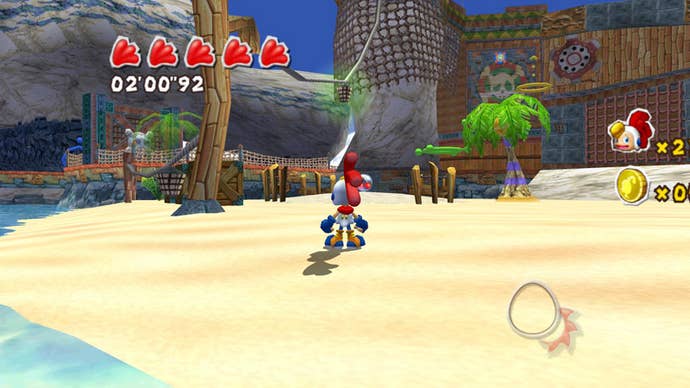
The Third-Party Malaise
The Dreamcast may have foundered for many reasons, but the quality of its offerings was never in doubt. The system represented Sega at the peak of its game, offering both excellent adaptations of some of the most outlandish arcade titles ever minted as well as inventive original creations. From bite-sized diversions like ChuChu Rocket and Samba de Amigo to more ambitious inventions like Skies of Arcadia and Crazy Taxi, the Dreamcast saw Sega's first-party output at its finest. They even made a solid 3D Sonic game — something we never really saw again.
The death of the Dreamcast seemed to suck the creative spark from Sega's internal studios. The system's library felt like the company's last hurrah, a do-or-die attempt to play all its cards and, as Nintendo would later describe their hopes for the DS system, either rise to heaven or sink to hell. DS rose to heaven. Dreamcast didn't, and it dragged the company's creative culture to hell with it.
Sega underwent a massive internal restructuring in the wake of the Dreamcast's dissolution. Its various and many first party studios were reshuffled, merged, split up, and generally destroyed. And with the gerrymandering of the company's innards came the abandonment of many of its key designers. Take United Game Artists, responsible for innovative wonders like Space Channel 5 and Rez. It was swallowed whole, and once that happened, studio boss Tetsuya Mizuguchi left the company. He was hardly alone. Today, the company continues to publish a number of excellent games, but the majority of them come from external studios like Creative Assembly. Many of the most successful tech companies to date have thrived thanks to the advantage inherent in owning all parts of the development process: Nintendo, Apple — and Sega, too, in better times. Being forced to surrender that boon seemingly took the wind out of Sega's sails.
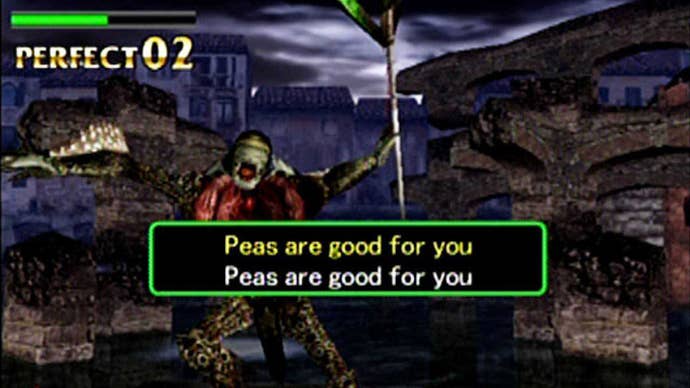
The Best of Dreamcast: Shooting
The fact that none of the Dreamcast's best shooters fell nearly within the first-person shooter camp says a lot about how out of step Sega was with the rest of the industry — but that uniqueness is a huge part of what people love about the console.
Mars Matrix: This fascinating shooter took the hoary top-down format and reduced it to a system powered by a single button. Atavistic, maybe, but bursting with depth and technique.
Bangai-O: A typically weird creation by Treasure, Bangai-O looked tragically underwhelming with its tiny 2D sprites... until you unleashed a flurry of screen-filling missiles, at which point you began to appreciate the need for next-generation hardware.
Rez: A throwback to the old-school rail shooter, Rez could have seemed tragically dated if not for its shimmering visuals and amazing soundtrack, which throbbed and pulsed to the rhythms of the gameplay. Certain releases came with a special vibrating accessory that also throbbed and pulsed to the rhythms of the gameplay... much to some people's naughty delight.
Typing of the Dead: Yes, it's a shooter... played entirely with keyboard. Somewhere between a light gun game and a typing tutorial, Typing of the Death perfectly encapsulated Sega's fearlessly bonkers approach to game design. No one else would have made a game like this.
Witnessing Sega's slow dissolution felt to many like a tragedy. The system offered a versatile canvas for ambitious artists and their works, and the console's library managed to offer the same breadth and ingenuity as the original PlayStation, though on a far smaller scale. "Its specs were better than anything out there when it was released," says former Electronic Gaming Monthly writer Greg Sewart, who currently produces Sega history video series Generation 16. "Even when the PlayStation 2 launch games first came out, the texture quality on the Dreamcast seemed better. Although U.S. support was less-than-stellar, it appeared the system had good Japanese support at the start, which was great.
"Plus it was powerful enough that most of the arcade conversions on the system looked pretty much perfect. It was a bit of a throwback to the early days of the Genesis in that respect."
Had Dreamcast survived, would Sega remain a creative powerhouse today? Owning the console ecosystem grants publishers many advantages, from full control over concept approval to superior marketing. Immediately upon going third-party, Sega doubled down on its most popular and salable titles: Crazy Taxi, Sonic the Hedgehog, Super Monkey Ball. The company continued to explore a few of its Dreamcast concepts on PS2 and later Wii, both internal and external concepts; games as diverse as Headhunter and Samba de Amigo saw follow-ups. Sonic Team even revisited NiGHTS: Into Dreams a decade later. Yet slowly and steadily, the more adventuresome of Sega's games faded away.

The sea change in Sega's lineup wasn't entirely to do with Dreamcast. The very nature of the games industry has undergone a massive upheaval over the past decade, with rising development costs and solidifying tastes redefining players' expectations and with them the rules of what does and doesn't sell. Realistically, Sega's output would have changed no matter what.
Speculatively, though, a first-party Sega could well have been a force for good over the past decade. From the very beginning, the company always demonstrated a willingness — an eagerness, even — to defy expectations and play on its own terms. When Nintendo shut out Sega's third-party licensing efforts in the 8-bit days, the company shrugged and made its own versions of popular arcade titles (often more faithful than those on NES, to boot). When Nintendo locked down 90% of the U.S. gaming market, Sega made Nintendo games look terminally unhip.
More to the point, the past decade has seen a suffocating sense of conservatism sett;e over the games industry. Risk-averse publishers rehash the same concepts year after year, while outlier genres and releases receive far fewer marketing dollars than the likes of Destiny or Assassin's Creed. With the resources and clout to do its own thing, perhaps Sega could have once again offered a banner around which hardcore game enthusiasts could have rallied.
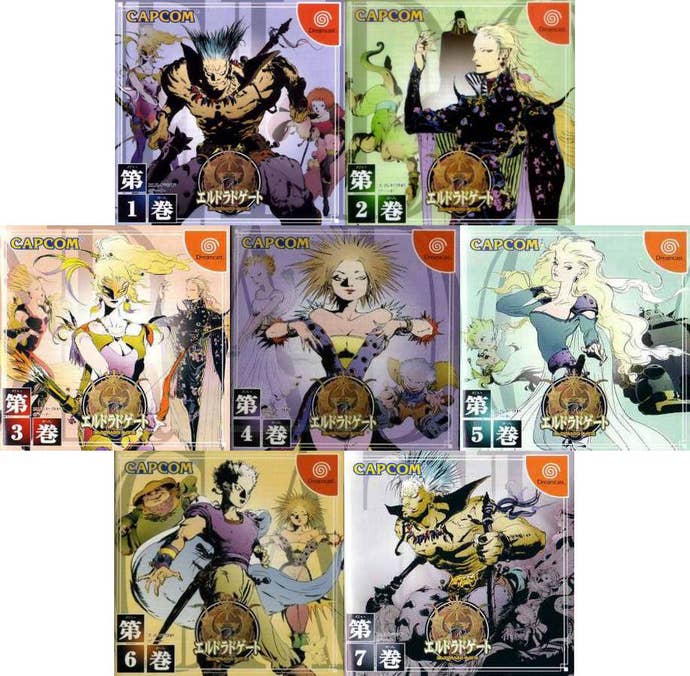
The Japan Question
Sewart hangs much of the weight of Dreamcast's failure on the western market. "U.S. third-party support was a problem," he says. "In particular, no EA games. Sure, Visual Concepts and Sega picked up the slack in the sports department, but EA was always about more than sports games." And more crucial than that, he adds, was "Sega's terrible reputation in North America."
Certainly the company had squandered much of the goodwill it fostered during the Genesis era by fragmenting the the user base and bumbling the Saturn launch. The fall from Genesis to Saturn in terms of marketshare was a steep one, and eventually Sega spent more than a year as an effective non-entity: They killed Saturn support in 1998, and in the interim before Dreamcast's launch, most fans drifted over to the thriving PlayStation.
"Sega hadn't released a game stateside in something like 18 months," says Sewart, "the extremely low print runs of The House of the Dead, Panzer Dragoon Saga, etc. And [Sega president] Bernie Stolar himself said, 'The Saturn is not Sega's future,' at the 1997 E3."
Despite this, the Dreamcast did surprisingly well for itself in the U.S. Out of the gate, its launch marked what was cited as the "biggest day in entertainment history" as the console sold a record-setting 225,000 units. While the system didn't manage to achieve the saturation it needed to weather the PlayStation 2 launch, it sold almost twice as well in the U.S. as in Japan despite being supported for only about half as long.
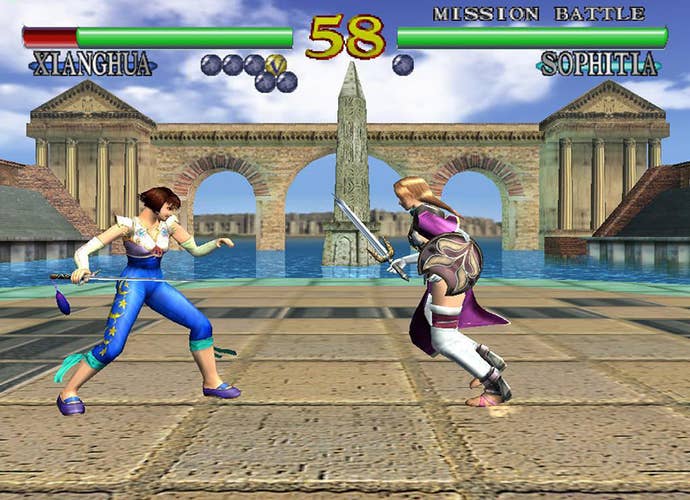
The Best of Dreamcast: Fighting
"From just a fighting game perspective, the Dreamcast was a continuation of everything the Sega Saturn and its Extended RAM Cartridge offered," says Mike Williams. "After years of poor ports, Dreamcast gave me nearly arcade-perfect renditions. For that, I will always be a grateful consumer."
SNK Vs. Capcom: Millennium Fight 2000: The SNK-Dreamcast connection started strong thanks to the link feature between the console and SNK's Neo Geo Pocket Color. But the publisher's crowning moment on the system actually came courtesy of Capcom, who brilliantly married two wildly different schools of fighting games to create something truly remarkable.
Soulcalibur: This launch game remained one of the most technically impressive titles on Dreamcast at time of the system's demise. It's not that other games were so bad; Soulcalibur was simply that indescribably good. Perhaps the last launch game to ever feel like a true leap over its predecessors.
Marvel Vs. Capcom 2: This wild, chaotic brawler couldn't be more different than the mannerly SNK Vs. Capcom. Everything from the sprawling roster to the weird lounge-jazz soundtrack defied expectations — and no console port was better than Dreamcast's/
Street Fighter III: Third Strike: Yes, another Capcom fighter, but this might be the best of the bunch. Woefully underappreciated in its time, it was only years later that the world began to appreciate the technique and finesse inherent in this ultimate expression of the Street Fighter concept.
Despite being a Japanese company at heart, Sega never really had a truly successful console in its home territory. Saturn came closest to hit status, but even that was a distant also-ran behind PlayStation. On the contrary, the internal politics that resulted from Genesis' disproportionately western success played a huge part in dividing the company and leading to many of the Dreamcast's fundamental challenges.
Had Dreamcast held out against the PlayStation storm, would the company's fortunes in Japan have improved? Beside their niche status at home, or perhaps because of it, Sega's consoles had always been unusually friendly to intrinsically Japanese games. One of the launch-day releases for Dreamcast in Japan was July, a visual novel. In the vacuum left behind by Dreamcast, those titles migrated to PlayStation 2 and PSP/Vita.
As such, it's not hard to imagine Sega's fortunes in Japan improving considerably in the current day if it still enjoyed first-party status. Or if not improving, then at least not suffering as badly as the competition. The Japanese video games market has shrunk in on itself, shriveling to a sliver of what it used to be, and outside of a few major tentpoles — Dragon Quest, Monster Hunter, Nintendo's all-inclusive casual titles — much of what dominates Japan's ragged sales charts amounts to the sort of niche content that appeared in remarkable numbers on Dreamcast.
Sega has done fairly well for itself with third-party releases; the decision to snap up the rights to "virtual idol" Hatsune Miku has paid dividends, and the likes of 7th Dragon 2020 and Phantasy Star Online 2 have kept the hardcore interested. But if the company managed to offer a continuous platform for such games, it almost certainly would have taken a bite out of Sony's grip over otaku-bait and similar titles — a modest but not insignificant portion of the market.
Japan has also gravitated predominantly toward mobile games, an area Sega had some experience with thanks to its 8-bit Game Gear and, more relevantly, both the Dreamcast VMU and the system's support for cross-linking with the SNK Neo Geo Pocket Color. While the VMU was a far cry from a cell phone, its integral role in the system's ecosystem demonstrated a genuine interest in the portable space and expanding the nature of games beyond the standard console format. To date, Sony remains the only first-party console maker to have ventured into the mobile market, and PlayStation Mobile has hardly been a rousing success. Could Sega have been the first to get it right?

The Microsoft Matter
Had Dreamcast remained a viable platform beyond its rapid expiration, the games industry of the early 21st century would have found itself in unprecedented territory: No less than four competing consoles would have been jockeying for consumer dollars. True, there have been four consoles on the market at once, but never four from major players with a genuine shot at profitability.
So: Could the market indeed have supported four different machines all at once? The Dreamcast's era marked the industry's shift toward multiplatform releases as a standard; perhaps Sega would have simply carved its success out of Sony's market share. But more likely, given history, is that Dreamcast's survival would have come at the expense of one of the less popular consoles of the era, GameCube or Xbox. But which?
GameCube might seem the obvious pick, having come in a few million units behind Xbox. But Nintendo has a deep war chest, a loyal fanbase, and perhaps above all a compelling need to survive in video games, given that it's the company's sole business. GameCube would have suffered, especially given that GameCube ended up being the beneficiary of Sega's initial third-party largess once Dreamcast flopped. But Nintendo and its devotees would have almost certainly followed the same path as in it did for GameCube: Ride out a rocky generation, then reinvent itself with the unconventional Wii.
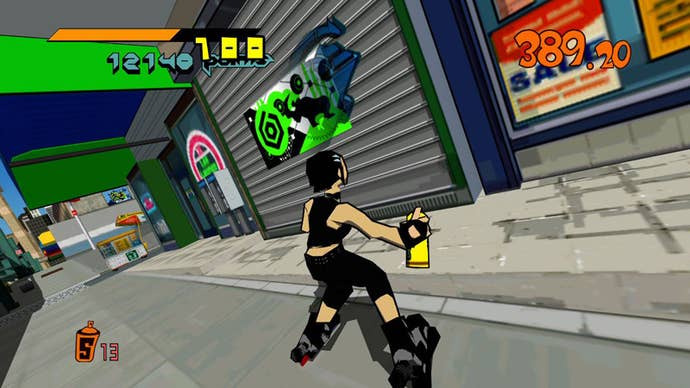
The Best of Dreamcast: Racing
When it comes to racing, Sega may be known best for the Daytona series. But these other takes on the genre kept Dreamcast fans streaking along at top speed.
Crazy Taxi: The Dreamcast conversion of this arcade hit came bursting with the same manic energy and all the Dragula you could handle.
Jet Grind Radio: Along with its innovative cel-shading, Jet Grind Radio combined racing, chase gameplay, graffiti, and an intense urban vibe to create a wholly unique experience.
San Francisco Rush 2049: The most traditional racer of the bunch, this futuristic take on the Rush series still wasn't all the conventional.
Microsoft, on the other hand, might have had to contend with Dreamcast as a more direct and dangerous competitor. There would be a certain irony in that: Microsoft provided Dreamcast's operating system, a modified Windows CE, quite likely as a means to get their foot in the door of the console market in advance of Xbox. Since the Dreamcast dried up in advance of the Xbox launch, Microsoft never really had to compete with itself.
But Dreamcast and Xbox shared a more crucial similarity than their respective operating systems. "Even beyond the games, Sega stepped into the gap and brought online play infrastructure to the console," says USgamer's Mike Williams. "Sure, people weren't ready for it, but it worked the few times I tried it. Sadly, it wasn't until after Xbox Live's launch that online was normalized for the mainstream consumer. It was just too much, too early."
But how much of Dreamcast's online challenges were simply a factor of its turbulent life? Would it have fared better if the system had survived? Xbox Live didn't see it first hit until Halo 2, which launched more than five years after Dreamcast's debut. That's plenty of time for Dreamcast — which came with Internet connectivity out of the box, unlike any of its competitors — to have found its niche and established a user base long before Microsoft.
Would Dreamcast have prevented Halo 2 from being a massive hit? Nah. But it could have kept the game from feeling nearly so groundbreaking. And, more to the point, it could have undermined Microsoft's stomach for competition. The games division has always been a money-losing proposition for Microsoft, to the point that the company has recently talked aloud about the possibility of divesting itself of the Xbox division. It's not hard to imagine that with a third rival plundering their marketshare, such talks would have happened much sooner... and that the all-in-one set-top box ambitions of the Xbox One might have abandoned the Trojan horse pretense of being a gaming system altogether.
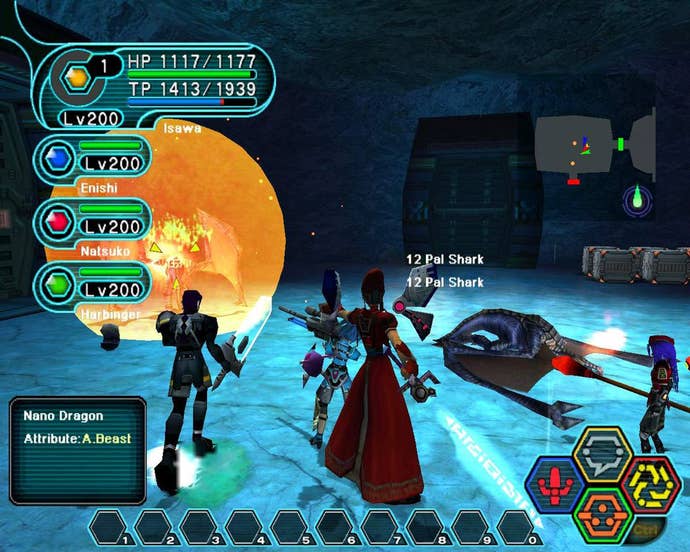
Dust and echoes
"Despite the various challenges the system faced, I think the hardware and the software was good enough that the Dreamcast could have survived," says Sewart. "It could have carried Sega into another console generation. But Sega itself was bleeding money, apparently. In order to prevent the Dreamcast's, demise decisions that were made years before needed to be reversed. I don't think it was ever going to end well for the Dreamcast."
And so, all of this is simply idle musing. The Dreamcast is long dead, and Sega will never release a new console. The company's hardware division had been hemorrhaging money for years, with life support reportedly coming from an aging angel investor who decided to cut his losses when Dreamcast ended up dead on arrival in Japan. The chain of events that led to system's demise stretched back for years and were deeply woven into the company's history and business that it would be impossible to isolate any one factor and save the console. In truth, Dreamcast was doomed even before it launched.
It's a heartbreaking example of excellent hardware being suffocated by the realities and foibles of business. And hardware "was incredible," agrees Sewart. "Booting up Soulcalibur for the first time was like nothing else. Plus, the system promised online play out of the box, which was something console gamers hadn't seen on a massive scale up until that point.
"As a member of the press it seemed fairly obvious that the Dreamcast was fighting a steep uphill battle. The off-generation timing of the system meant that it was never going to hold up against the second or third wave of PlayStation 2 games. The system was going to be obsolete before the console generation it technically kicked off really got going."
"The Dreamcast was a beautiful star that burned out too soon," mourns Williams. But not too soon to build an impressive library of top-notch games and establish a loyal fanbase that gathers every Sept. 9 to mourn what might have been.
Could Dreamcast have survived? And how would the industry be different if it had? You've read our speculation — now it's your turn.








